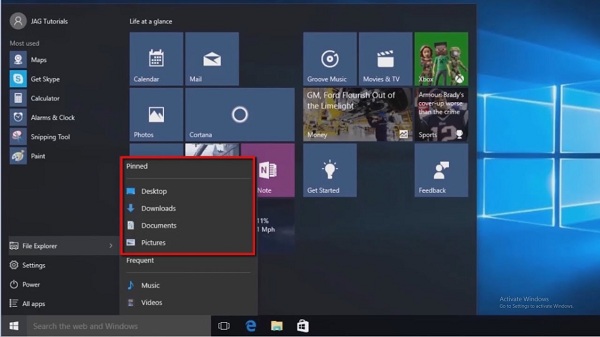How to Scan and Convert Captured Text into Word Document
If you have a
printed document or images with some information that you want to use in your
assignment or project, then you don’t need to retype it. If the information is
of a few lines or a paragraph, then it can be retyped with no difficulty. But,
when it is of an entire page or several pages, then typing the information
manually isn’t easy. You have a couple of ways to convert a printed document or
text images into a Word file.
Most desktop
versions of Microsoft Word support PDF files, you can open and edit the PDF
documents directly into them. If you don’t want to go through the pain of
converting files, then make sure to scan them into PDF format. If the document
is scanned as a picture, then you’ll have to turn it into the compatible format
by using any converter. You can use the Office Lens app on a smartphone with
your Microsoft account to scan the documents and store in your OneDrive storage
as Word files.
How
to open scanned PDF documents in Word as an editable file
This is the simplest and most direct method to work on scanned
documents in Word. Word application is capable of recognizing and opening PDF
files independently with no additional program. Check that your scanned files
have .pdf extension.
1. Locate the scanned PDF document and open it
in the Microsoft Word.
On Windows: Locate the file and right-click on it, then go to
‘Open with’ and select ‘Word’ from the options.
On Mac: Select the file, then click on ‘Open with’ from the
‘File’ menu and choose ‘Word’ from the options.
2. Select ‘OK,’ if prompted. Your scanned
document will now start converting into the Word document, which may take
several minutes depending on the file size and content.
3. You may need to ‘Enable Editing’ for your
document before making changes into it. Check whether a yellow bar with a
warning message appears near the top of the Word window. Click ‘Enable Editing’
to unlock editing for the document.
4. You won’t get the exact text as you see in
scanned PDF file. In the converted Word document will have extra spaces between
words, missing words, and other mistakes that you’ll need to correct.
5. Edit and clean up the document.
6. When you are done with editing, save the
document by pressing ‘Ctrl + S’ in Windows or ‘Command + S’ on Mac.
Alternatively, click the ‘Office’ icon at the upper left corner of the Word
window and select ‘Save As.’
How
to convert and open captured images into Word document
If the scanned documents are saved in JPG, PNG, or other image
formats, then first you’ll need to convert them into a compatible file format.
Here is how.
1. Open a browser in your computer and go to
‘www.newocr.com.’ It is a website that converts all types of files for free.
You can use your preferred file converter website or tool.
2. When you reach the home page of New OCR,
click on ‘Choose File’ button under Select your file heading near the top. File
Explorer or Finder window will open on your screen depends on the device you’re
using.
3. Browse the scanned file and click on it to
select.
4. Click ‘Open’ to upload the file to the
converter website.
5. Then, click on the ‘Upload + OCR’ button at
the bottom of the page. This will start extracting the text from the uploaded
image.
6. Now, click the ‘Download’ button at the
bottom and select ‘Microsoft Word (DOC).’
7. After downloading the converted file, you
can open and edit it in your Word application.
8. Open the converted file of the scanned
image in Word and edit your document. You may need to ‘Enable Editing’ for your
document before making change.
You can also try the official way Microsoft has provided to you,
i.e., Office Lens app. Capture the text images with your Smartphone and
download them from OneDrive to use in Word document.
Deam
Jones is a self-professed security expert; he has been making
the people aware of the security threats. His passion is to write about Cyber
security, cryptography, malware, social engineering, internet and new media. He
writes for Norton security products at norton.com/setup.
Source:- word
document



Comments
Post a Comment